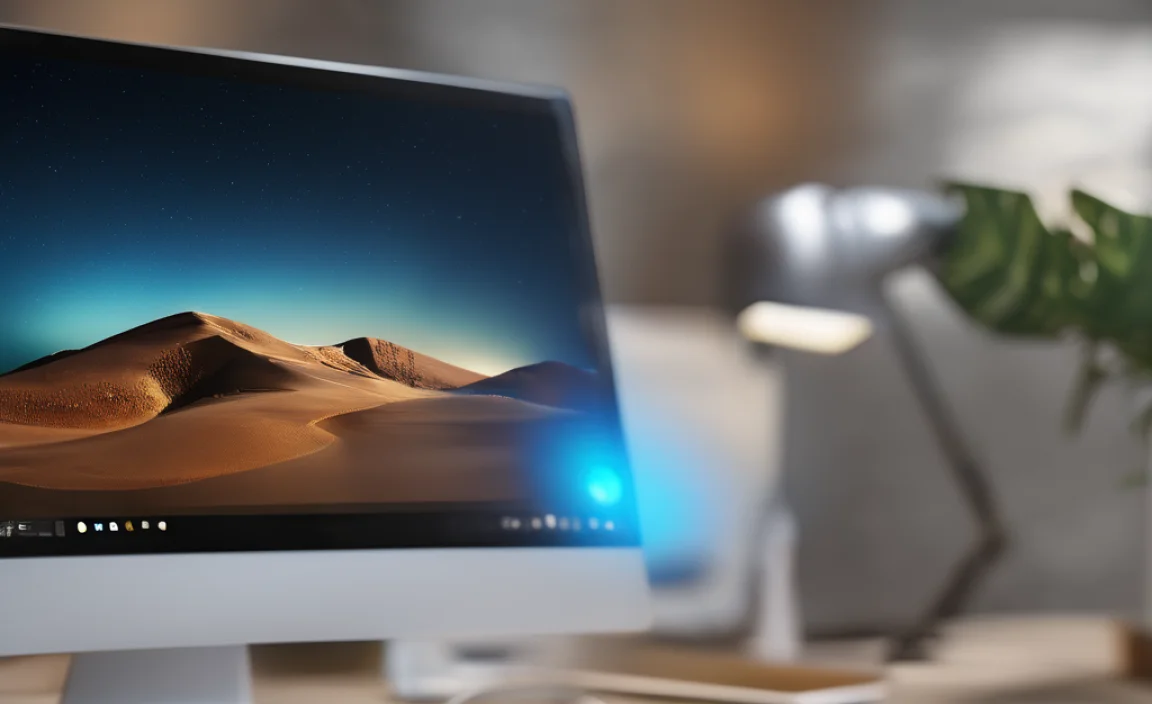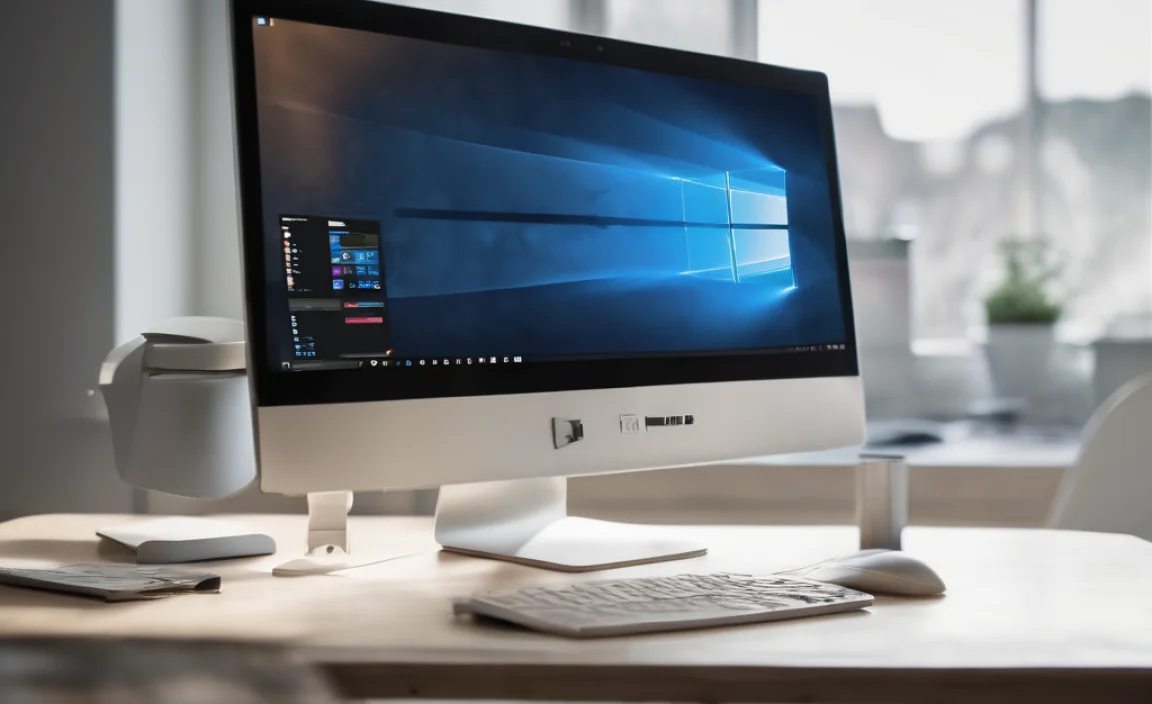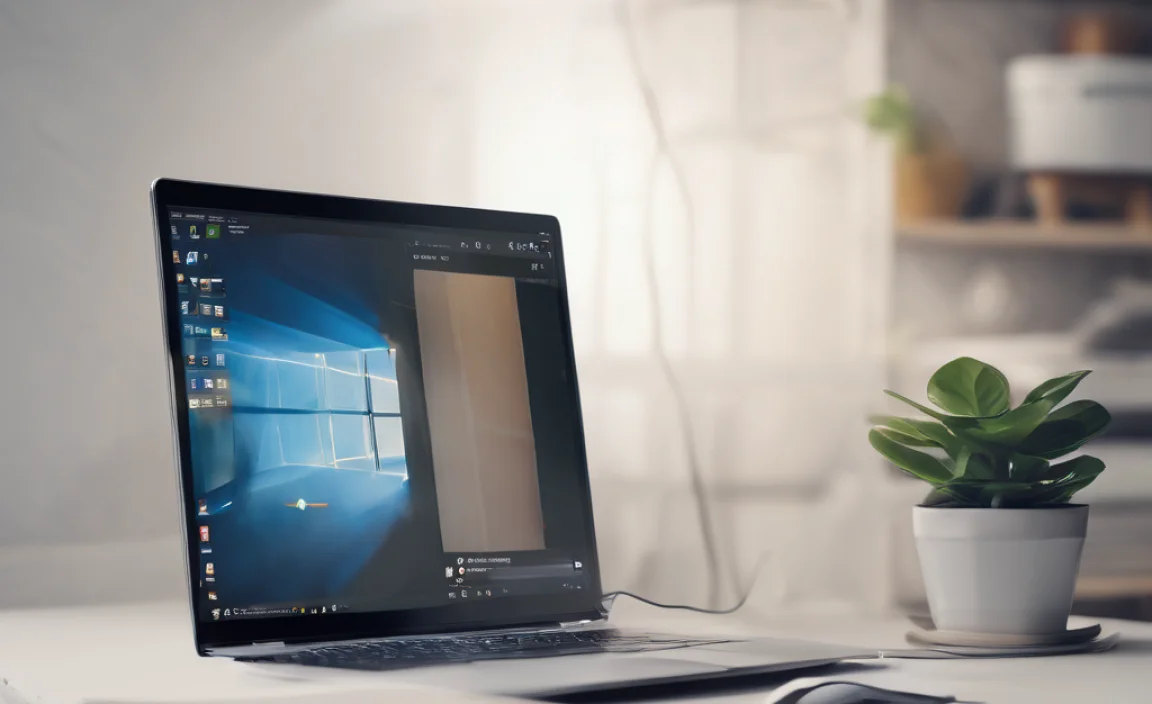Disk cloning software for Windows 10 is a genius solution for backing up your entire system, migrating to a new hard drive, or saving a perfect copy of your setup. It’s a straightforward process that ensures your data is safe and your computer can be restored quickly, even if disaster strikes. Let Mike Bentley guide you through it!
Disk Cloning Software For Windows 10: Your Genius Solution Explained

Is your computer running slower than molasses? Worried about losing all your precious photos, documents, and beloved games if your hard drive decides to quit? You’re not alone! Many of us have faced that sinking feeling when a computer problem pops up, leaving us scrambling.
But what if there was a way to create an exact, bit-for-bit copy of your entire computer, ready to go at a moment’s notice? That’s where disk cloning software for Windows 10 comes in, and trust me, it’s a truly genius solution. We’ll walk through exactly why it’s so useful and how you can use it to keep your digital life safe and sound.
Why Disk Cloning is a Game-Changer for Windows 10 Users

Think of disk cloning like taking a perfect snapshot of your computer’s personality. It doesn’t just copy your files; it duplicates everything on your hard drive – your operating system (Windows 10, of course!), all your installed programs, your settings, your desktop, your documents, your photos, and even those hidden files Windows needs to run smoothly. This is incredibly powerful for several reasons:
- Disaster Recovery: The biggest win for disk cloning is peace of mind. If your hard drive fails, gets corrupted by a virus, or you accidentally delete something crucial, you can restore your computer to exactly how it was when you made the clone. No more stressful days trying to reinstall everything from scratch!
- Upgrading Your Hard Drive: Planning to switch from an old, slow hard drive to a speedy new Solid State Drive (SSD)? Disk cloning makes this a breeze. You can clone your entire existing system onto the new drive, and when you boot up, it’ll be like nothing changed, except your computer will be lightning fast!
- System Migration: Moving your entire Windows 10 setup to a new computer? Cloning can simplify this process significantly, ensuring all your applications and settings transfer over smoothly.
- Testing and Experimentation: Want to try out a new operating system or a risky software update without messing up your current setup? Clone your drive, make your changes on the clone, and if anything goes wrong, you can simply revert to your original, cloned drive.
Many people think backing up just means copying files, but disk cloning goes much further. It creates a bootable image of your drive, meaning if your original drive dies, you can boot directly from the cloned drive and continue working as if nothing happened. It’s a safety net that can save you hours of frustration and potential data loss.
The Best Disk Cloning Software for Windows 10

The good news is that you don’t need to be a tech wizard to perform disk cloning. There are many user-friendly software options available for Windows 10. Some come built into your system, while others are popular third-party tools. Here’s a look at some of your best choices:
Built-in Windows Tools: A Starting Point
Windows 10 itself has some features that can help, though they aren’t full-fledged cloning tools in the way third-party software is. Still, they are worth knowing about:
- System Image Backup: Windows has a built-in tool for creating system images. This creates a backup of your entire system drive, which can be used to restore your computer. It’s not a “clone” in the live-sense, but it serves a similar purpose for recovery.
To find this, you can search for “Backup and Restore (Windows 7)” in the Windows search bar. Don’t let the “Windows 7” in the name fool you; it’s still available and functional in Windows 10 & 11 for creating system images.
Popular Third-Party Disk Cloning Software
For true disk cloning capabilities, third-party software often provides more features, flexibility, and ease of use. Here are some highly recommended options:
| Software Name | Best For | Key Features | Ease of Use | Price (Approx.) |
|---|---|---|---|---|
| Macrium Reflect Free | Overall excellent free option for personal use. | Disk imaging, cloning, scheduling, rapid delta restore. | Beginner-friendly with helpful guides. | Free for personal use; paid versions for advanced features. |
| EaseUS Todo Backup Free | All-around reliable free utility. | File backup, system backup, disk/partition cloning, cloud backup options. | Very intuitive and easy to navigate. | Free for personal use; paid versions for business/advanced features. |
| AOMEI Backupper Standard | Solid free choice with broad functionality. | System/disk/partition/file backup, cloning, sync, system restore. | Clean interface, straightforward options. | Free for personal use; paid versions for business/advanced features. |
| Acronis Cyber Protect Home Office | Premium features and strong security integration. | Disk imaging, cloning, backup, anti-malware, anti-ransomware. | Feature-rich, professional feel. | Paid subscription (often has free trial). |
| Clonezilla | Advanced users, powerful but less intuitive. | Disk-to-disk, disk-to-image, partition-to-partition cloning, supports many file systems. | Steep learning curve, text-based interface. | Free and open-source. |
When choosing, consider what you need most. For most Windows 10 users looking for a simple and effective solution to clone their drive, Macrium Reflect Free or EaseUS Todo Backup Free are fantastic starting points. They offer robust features without costing a dime for personal use.
How to Clone Your Windows 10 Disk: A Step-by-Step Guide

Let’s walk through the process using a popular and user-free tool, Macrium Reflect Free. The general steps are similar across most good cloning software, so this will give you a solid understanding.
What You’ll Need:
- A working Windows 10 computer.
- A new hard drive (HDD) or Solid State Drive (SSD) that is at least as large as the data on your current drive. If you’re cloning to a new, larger drive, size isn’t as critical as ensuring the target drive has enough space for the cloned content.
- A way to connect the new drive to your computer. This usually means an available SATA port inside your PC or a USB-to-SATA adapter if you’re cloning externally.
- Macrium Reflect Free software, downloaded and installed. You can find it on the official Macrium website.
Step 1: Connect Your New Drive
If your new drive is an internal drive, power off your computer, open the case, and connect the new drive using SATA data and power cables. If it’s an external drive with a USB enclosure, simply plug it into a USB port.
Step 2: Initialize and Format the New Drive (If Necessary)
Windows should detect the new drive. You might get a prompt to initialize it. If not, search for “Disk Management” in the Windows search bar and open it. Find your new drive. It will likely show as “Unallocated.” Right-click on the unallocated space and select “New Simple Volume.” Follow the on-screen wizard. The default settings are usually fine for a cloning destination. This step ensures the drive is ready to receive data.
Step 3: Install and Launch Macrium Reflect Free
Download Macrium Reflect Free from their official website and install it. Once installed, launch the program. You’ll see a list of your connected drives.
Step 4: Identify Your Source and Destination Drives
Carefully look at the drives listed in Macrium Reflect. Your “Source” drive is your current Windows 10 drive (usually C:). Your “Destination” drive is the new hard drive you just connected. It is CRITICAL to identify these correctly. Cloning overwrites everything on the destination drive!
Step 5: Start the Cloning Process
In Macrium Reflect, find your source drive. You should see an option like “Clone this disk.” Click on it. A new window will open, showing you a representation of your source disk.
Next, you need to select your destination disk. Typically, you’ll see a section below where you can drag and drop partitions from your source disk to your destination disk, or there might be a direct option to “Select a disk to clone to.” Choose your newly connected drive here.
Important Note on Partitions: If your new drive is larger than your old one, Macrium Reflect will usually offer to automatically resize the partitions on the new drive to fill it. This is generally what you want.
Step 6: Review and Start the Clone
Once you’ve selected your destination drive and configured the partitions (if necessary), you’ll usually see a summary of the operation. Double-check everything. Make sure the source drive is your current Windows drive and the destination is your new, blank drive.
When you’re absolutely sure, click the “Finish” or “Start Clone” button. Macrium Reflect will then begin the cloning process. This can take anywhere from 30 minutes to several hours, depending on the size of your drive, the amount of data, and the speed of your drives and connection.
Step 7: Boot from the New Drive
Once the cloning is complete and Macrium Reflect confirms success, shut down your computer completely.
- If you cloned to an internal NVMe SSD or SATA drive: You should physically disconnect your old drive (or at least disconnect its data cable) to ensure the computer boots from the new one automatically. Then, power on your computer.
- If you cloned to an external USB drive: Keep the USB drive connected and power on your computer. You might need to enter your BIOS settings (usually by pressing F2, F10, F12, or DEL right after powering on) and change the boot order to prioritize the USB drive.
Your computer should now boot up from the cloned drive, and everything should look and feel exactly the same as before, just potentially much faster if you upgraded to an SSD!
Tips for a Smooth Cloning Experience

Here are a few extra tips to ensure your disk cloning goes off without a hitch:
- Backup Important Data First: While cloning is generally safe, it’s always wise to have a separate backup of your most critical files (photos, important documents) before undertaking any major disk operations. This is just good practice!
- Close Unnecessary Programs: Before you start the cloning process, close all running applications and save any open work. This ensures that the clone reflects a stable system state and that there are no locked files that could cause issues.
- Disconnect External Devices: Unplug any unnecessary external USB drives or peripherals that aren’t the target cloning drive. This minimizes the chance of confusion or accidental selection of the wrong drive.
- Power Source Reliability: Ensure your computer is plugged into a reliable power source. A power interruption during cloning could corrupt the cloned drive, requiring you to start over.
- Check Drive Health: Before cloning, it’s a good idea to run a check on the health of your source drive. You can do this in Windows by opening Command Prompt as administrator, typing
chkdsk C: /f(replace C: with your system drive letter if different), and pressing Enter. You’ll likely need to restart to perform the check. - Patience is Key: Cloning can take a while. Don’t be alarmed if it seems to be taking longer than expected. Just let it do its thing!
What is Imaging vs. Cloning?
You might hear the terms “disk imaging” and “disk cloning” used interchangeably, but there’s a slight difference:
- Disk Cloning: This creates an exact, sector-by-sector copy of one drive onto another. It’s a direct copy, and the target drive can be immediately booted from. This is ideal for upgrading to a new drive or creating a bootable backup.
- Disk Imaging: This creates a compressed file (an “image” file) of your entire drive or partition. This image file contains all the data and can be restored to a drive later. It’s often used for creating backups that take up less space. You would typically need to create a bootable recovery media (like a USB drive) to restore an image to a new drive.
Most modern cloning software can perform both functions. For upgrading to a new drive, cloning is usually the more direct method. For general backups and disaster recovery, imaging is very popular.
Common Disk Cloning Errors and How to Fix Them
While cloning is usually smooth, sometimes things don’t go exactly as planned. Here are a few common issues and their fixes:
| Error/Problem | Possible Cause | Solution |
|---|---|---|
| New drive not detected. | Drive not properly connected; drive not initialized. | Ensure power and data cables are securely connected. Open Disk Management and initialize the drive if it appears there. |
| Cloning stops with an error message. | Bad sectors on source drive; problematic software glitch. | Run chkdsk /f on the source drive. Try using different cloning software. Ensure no crucial system files are locked by closing all programs. |
| Computer won’t boot from the new drive after cloning. | Incorrect boot order in BIOS/UEFI; original drive still connected and prioritized. | Enter BIOS/UEFI settings and ensure the new drive is the first boot device. Disconnect the old physical drive if necessary. Verify the cloned partition is marked as “Active” or has a boot flag. |
| Cloned drive has unallocated space, but it’s not usable. | Partition resizing not handled automatically; partition table issues. | Use Disk Management or the cloning software’s tools to extend the primary partition into the unallocated space. If significant issues persist, re-clone. |
Don’t panic if you encounter an error. Most issues can be resolved by carefully reviewing the steps, ensuring connections are secure, and using the built-in Windows tools to troubleshoot your drives.
The Security Aspect of Disk Cloning
Keeping your computer secure is paramount. While disk cloning itself isn’t a direct security tool, it plays a vital role in your overall security strategy. Here’s how:
- Ransomware Protection: Ransomware can encrypt all your files, making them inaccessible unless you pay a hefty ransom. If this happens, a recent clone of your drive allows you to wipe the infected system and restore your data from the clean clone, bypassing the ransomware altogether. This is a lifesaver!
- Malware Recovery: If a persistent virus or malware infects your system deeply, a clean clone can be your fastest way to get back to a working system without spending hours trying to remove every trace.
- Secure Disposal or Sale: When it’s time to get rid of an old drive, simply cloning it does NOT erase your data securely. You must use secure data erasure tools or physically destroy the drive. However, cloning is useful before you do this final step.
For more information on securing your Windows system, always consult official resources like Microsoft’s security guides. For example, understanding Windows security features is a great first step.
Frequently Asked Questions About Disk Cloning
Q1: Do I need to install Windows all over again after cloning?
No, that’s the beauty of disk cloning! It creates an exact copy, so your Windows installation, all your programs, and settings are transferred as is. You should be able to boot right into your familiar Windows environment.
Q2: Can I clone a larger drive to a smaller drive?
Generally, no. The destination drive must be at least as large as the used space on the source drive. If you’re only using 200GB of a 1TB drive, you can clone it to a new 500GB drive, but you can’t clone a fully used 500GB drive to a 250GB drive.
Q3: What’s the difference between cloning and backing up files?
Cloning copies your entire system – the operating system, installed programs, settings, and files. File backup only copies selected files and folders. Cloning is for full system recovery or migration; file backup is for individual file restoration.
Q4: What if my original drive has errors? Can I still clone it?
Yes, you can try. Software like Macrium Reflect can often “skip” bad sectors. However, if the errors are severe, the clone might fail or be unstable. It’s best to try to fix disk errors first using `chkdsk`.
Q5: How long does disk cloning usually take?
It varies greatly! It depends on the amount of data, the speed of your drives (SSD vs. HDD), and the connection type (SATA vs. USB). A full system clone can range from 30 minutes to several hours.
Q6: Do I need to create a bootable USB drive for cloning?
Not usually for direct disk-to-disk cloning. Most software allows you to perform the clone from within Windows. You typically only need a bootable USB drive if you’re performing a system restore from an image file or if your Windows OS is too corrupted to even run the cloning software.
Q7: Is disk cloning safe for my system?
Yes, when done correctly with reputable software, disk cloning is a safe and reliable process. It’s designed to replicate your system. The main risk is accidentally selecting the wrong drive as the destination, which would erase its contents. Always double-check your source and destination!
Conclusion: Take Control of Your Windows 10 System
Disk cloning software for Windows 10 is truly a genius solution, offering unparalleled peace of mind and fantastic utility. Whether you’re aiming to upgrade to a faster SSD, safeguard against catastrophic data loss, or simply want an easy way to restore your system after an unexpected issue, cloning has you covered. By following these steps and understanding the process, you’re empowering yourself to manage your computer’s health and security with confidence.
Don’t let the fear of potential computer problems hold you back. With the right tools and a little know-how, you can tackle these challenges head-on. Take that snapshot of your perfect system today, and rest easy knowing your digital life is protected and ready for whatever comes next!
